
Mon-Fri 9am-5pm
Talk to our friendly electric car leasing experts now: 01942 910 001This website uses cookies to ensure you get the best experience. Learn more
How much is it to fuel an electric car?

What is the current cost to fuel an electric car?
The obstacles to moving to an electric car are somewhat more prevalent with personal customers (personal contract hire and personal contract purchase) as opposed to the business customers (who will utilise business contract hire, contract purchase and finance lease).
As our dedicated business leasing page shows there are some strikingly good reasons for a business - limited company, LLP or PLC – to use zero-emission cars as part of their fleet demographics. Indeed, when you compare an EV to a petrol / diesel equivalent, unless there are some other obvious obstacles in a driver moving into an EV (especially for high-mileage 30,000+ drivers), you do have to question why that decision was made not to enjoy these pros.
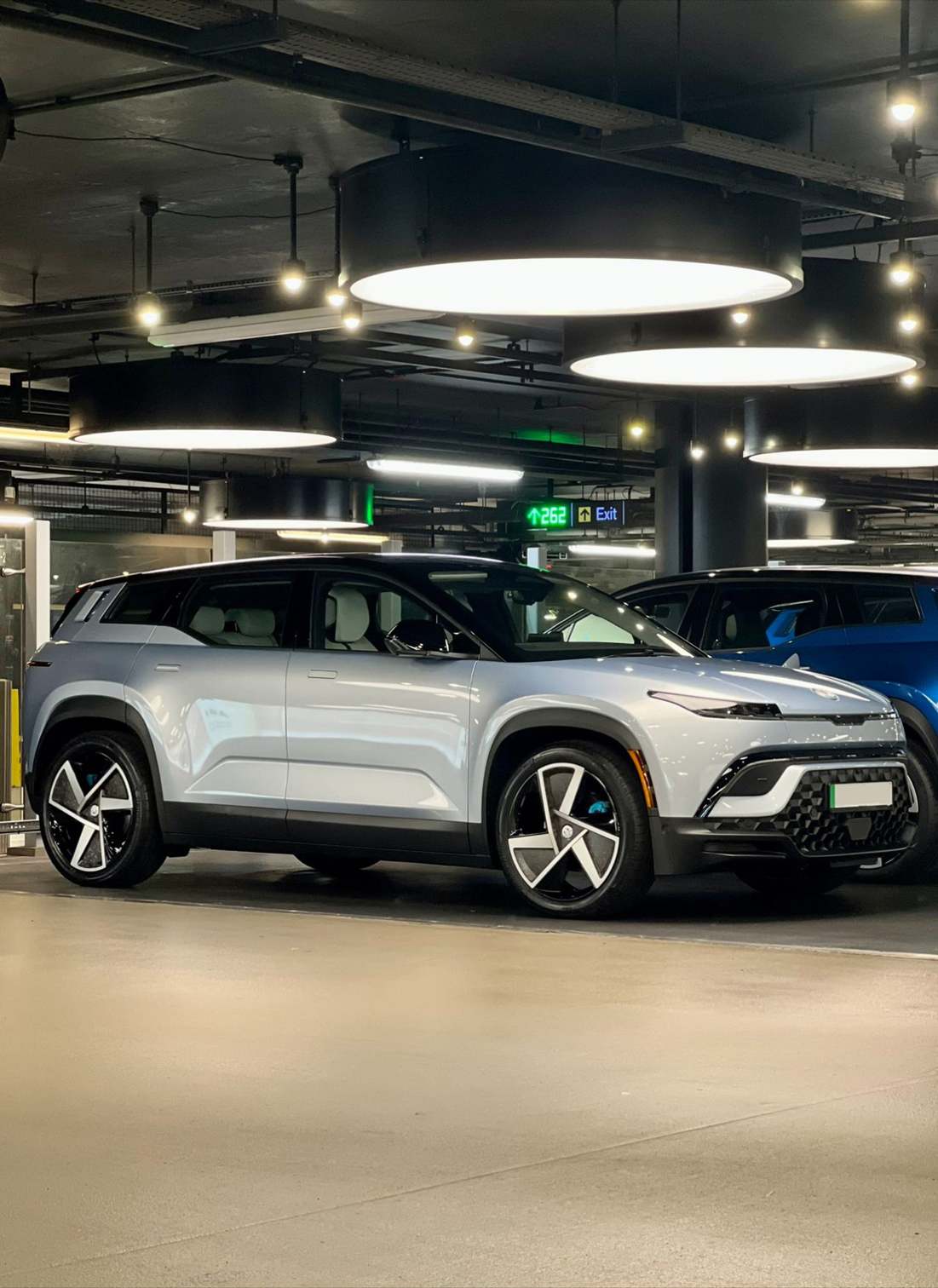
The advantages do not just pertain to the driver but to the company and the environment too. But for those in the retail and consumer market, who do not enjoy these specific tax breaks, there are queries as to how beneficial electric transport really is. In particular, there is a clear lack of understanding about fuel costs, with some customers left feeling uncertain if they can actually afford to run their EV over their petrol/diesel.
For any combustion vehicle driver, it is no surprise that their running costs have been dramatically impacted over the last 3 years. In this incredible chart from the RAC you will note the big discrepancy in fuel price from 2020 through to present day (October 2023) where the latest petrol price is 156.30p for petrol and 162.58p for diesel.
Average petrol price
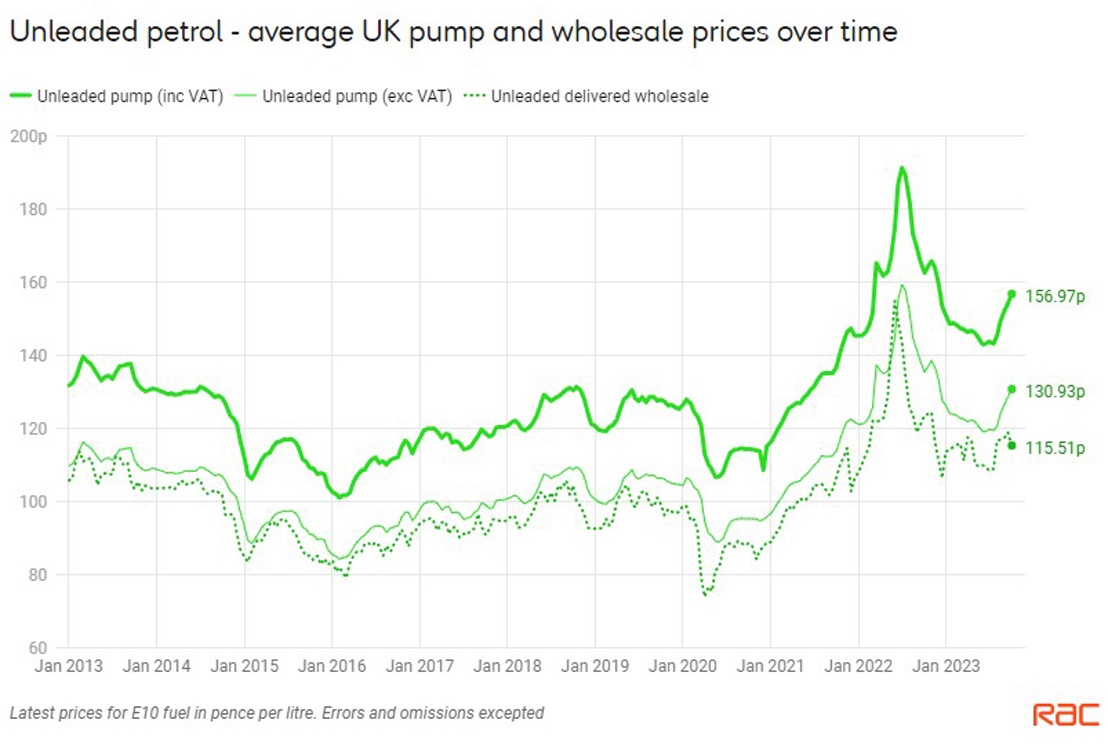
Average Diesel price
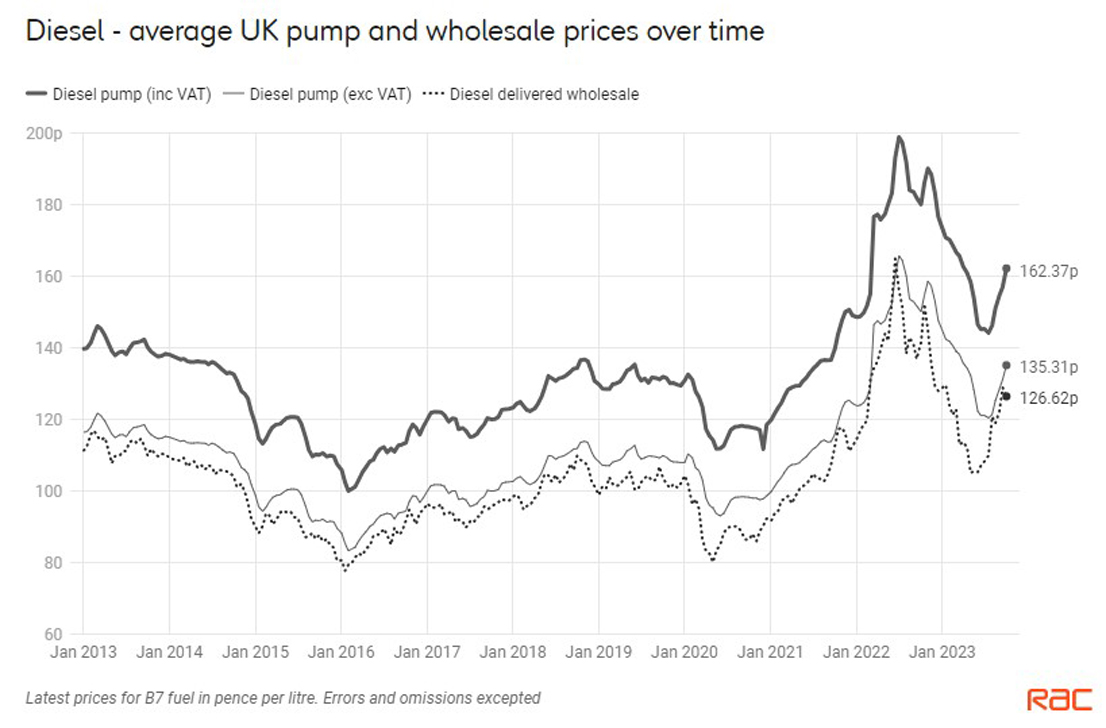
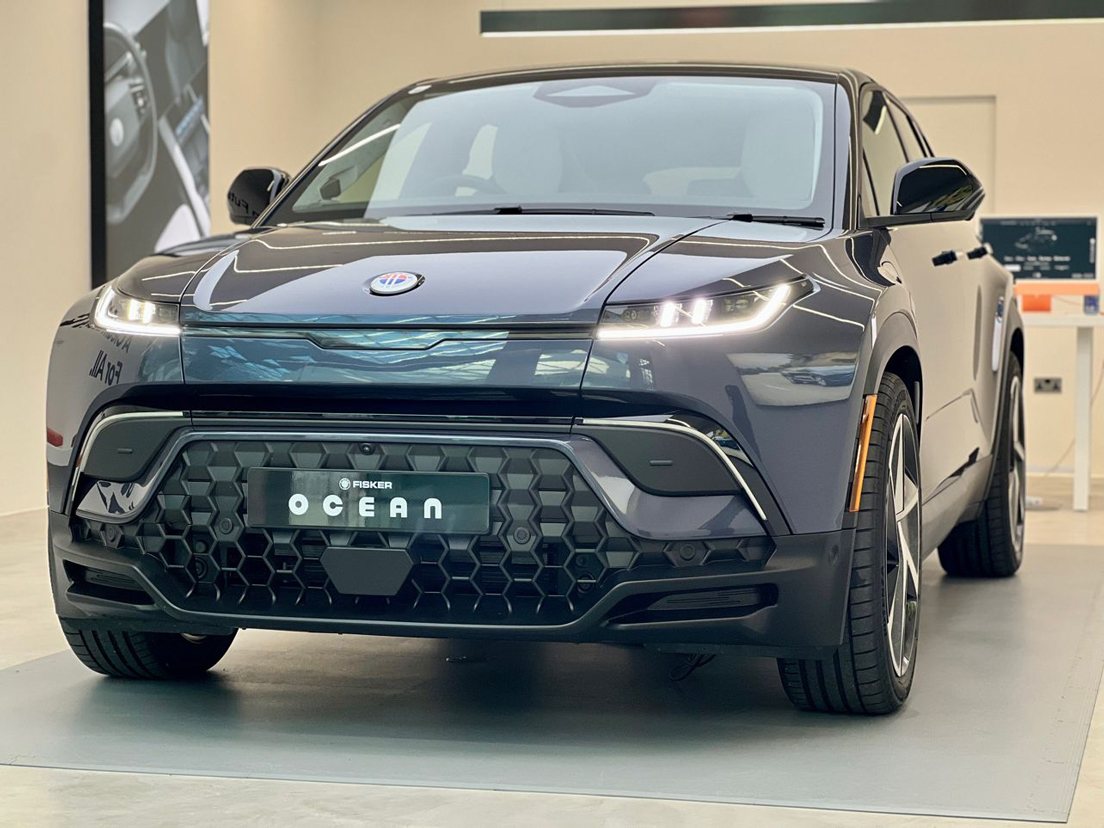
While there was a noticeable peak in Summer 2022, when petrol and diesel became almost unaffordable, there has been a period of decline following by some recent steady increases. The significance for most drivers is that their average cost per mile will sit anywhere around 15 pence to 20 pence per mile.
In true cost analysis terms, this will translate to around £170 per 1000 miles for a diesel and £200 for a petrol option. But, this is contingent on the price you (or the business) pay per litre and the MPG of the vehicle. Poor driving behaviours and high performance options with lower MPG will clearly impact these averages.
For any personal or fleet customer analysing this on a Whole of Life Cost basis, they need to take this into account along with the finance, maintenance and insurance costs. This is particularly important when comparing electric vs petrol/diesel cars.
With electric cars, much of the charging sessions will likely happen at home. So domestic car and van charging is most likely occurring on a domestic tariff. Indeed, research from our Zap Map partners indicated that over 80% of drivers do have access to a charging facility at home.
And understandably most potential EV drivers will want some form of access to an electric car charger at home, with other research indicating that less than 20% would actually go into an EV without a home solution . The significance of where you charge, and when you charge, is actually crucial in ascertaining the cost of running an EV.
For the vast majority charging their EV at home, they will be subject to the tariffs set by the energy company (and ofgem). As at October 2023, ofgem have confirmed the following price for standard variable tariffs.
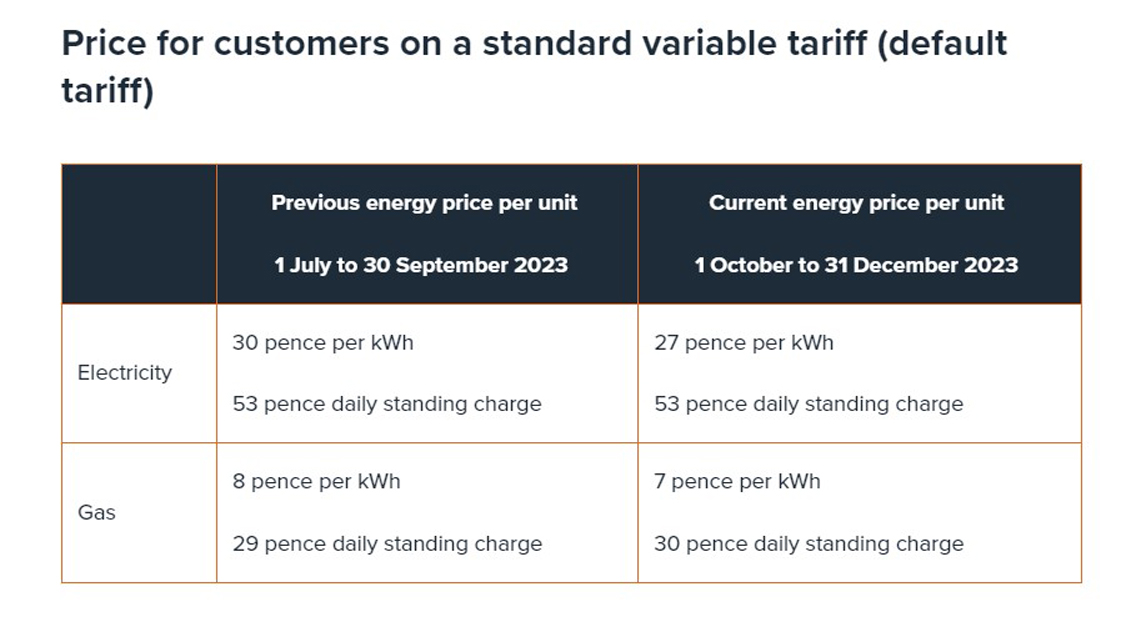
Is a Fisker Ocean better (and cheaper) than a petrol or diesel vehicle to run?
In summary from 1 October to 31 December your tariff cannot exceed 27 pence per kWh. But what does this mean for an EV lease customer fuelling their new car? Taking our Fisker Ocean SUV deal as an example, you will notice on our e-car website that we do set out key metrics on each EV including the battery size (shown as kWh), the charging cost (with the 27 pence maximum) and the equivalent cost per mile (which uses the real world range / full charging cost to calculate).
For any customers using the e-car website, they will see that the “full charge cost” is an amendable box, where they can adjust the figure to their actual home tariff. But why do this? Are tariffs for electricity not the same in the UK?
Each domestic household will have some form of agreement with their electricity supplier and this will show them the pence per kWh which is being charged. While many will have a standard variable, and can use the default setting on the e-car website, others may have dedicated car charging tariffs. One such example is that from E.ON, who have a Next Drive EV tariff for their customers.
For those who charge between 12 and 7am (i.e. overnight) a 100% renewable electricity supply will guarantee a lower charging cost of just 9.5p/kWh. And to help their customers further, they can also organise a dedicated charging point - the E.On home charger - which can be set to operate at the cheaper times. And some customers who are new to this may be asking what is the significance of all this?
To put this clearly (and numerically) for you, take the Fisker Ocean SUV as example. With a battery capacity of 113 kWh, and a usable battery of 106.5 kWh, this is a big battery set up. Shown below are the two examples:
- Standard Tariff - at 27 p/kWh this would cost £28.76 to fuel the car from 0 - 100%. And with a real-range of circa 330 miles (combined) this would equate to 8.71 pence per mile; and
- E.On Next Drive - at 9.5 p/kWh this would cost £10.12 to fuel the car from 0 - 100%. And with a real-range of circa 330 miles (combined) this would equate 3.07 pence per mile.
So to answer the question above, the cost you pay on your electricity bills is instrumental on how effective, or cheap, your new electric car will be. Comparing the 15 - 20 pence per mile figures quoted above for petrol and diesel, you can quickly see that for the Fisker Ocean example, it is literally half the cost on a standard tariff.
And 20% of the cost with a supported E.ON tariff. When you consider the average mileage is around 10,000 per annum, this means for a fuel efficient combustion car you will pay around £1,500 per year in petrol or diesel. On the Fisker (with the E.ON tariff) you would pay £300. In cost per month terms, you save at least £100 per month with the electric car as opposed to the petrol / diesel option.
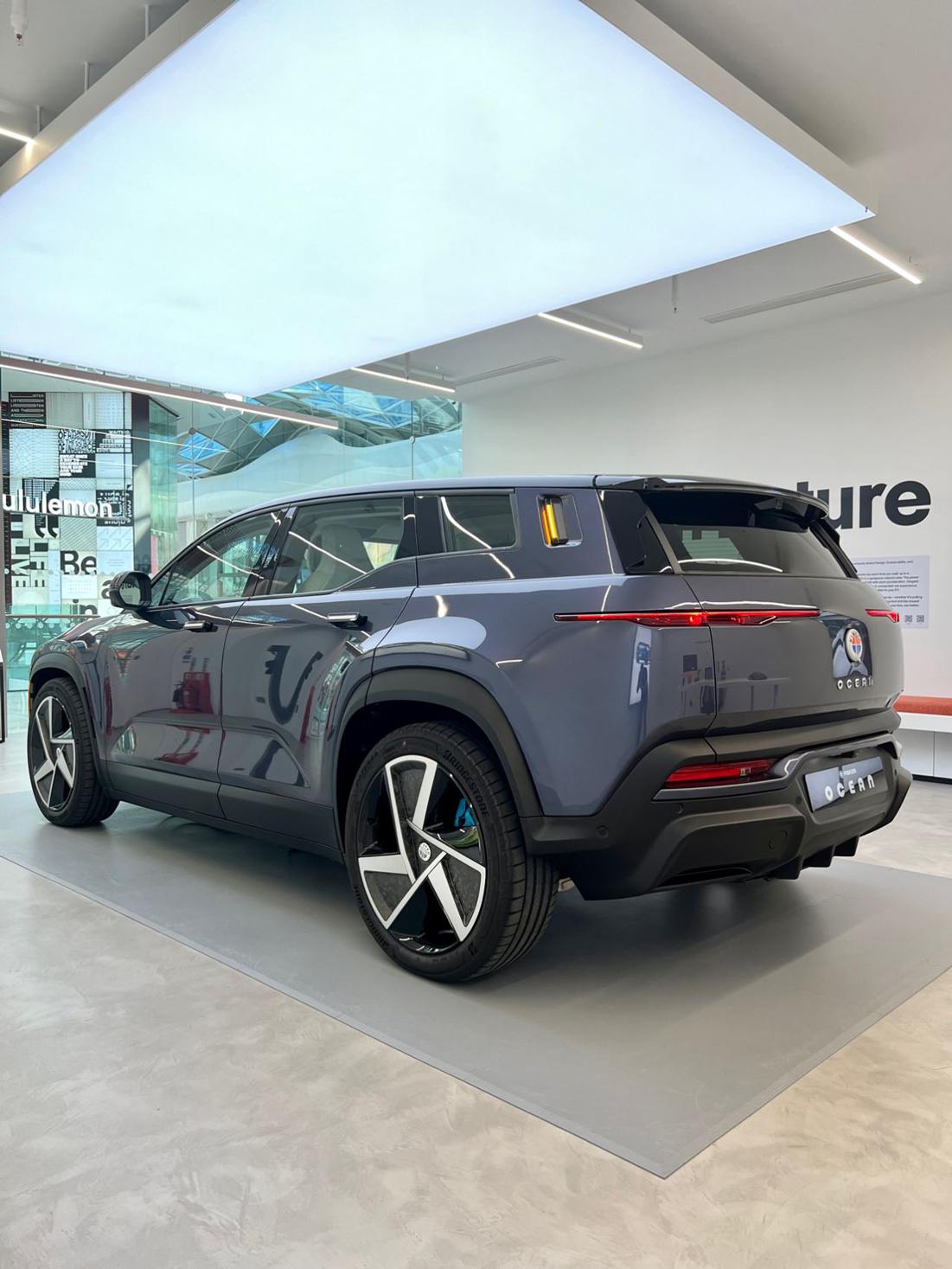
Of course, we have made certain assumptions, which we appreciate can be challenged - what if you charge outside the home where public charging can be up to 72 pence per kWh? What if you drive your EV on a motorway where it is less efficient and the range circa 70% lower?
What if you compared this to winter months, where the lower temperatures do impact the range? However, we could easily say that imagine you have a renewable energy solution like solar panels which resulted in free electricity? Or imagine you used city and urban driving, which vastly increased your range?
So when you are looking into your new electric car it is particularly important to analyse the key facets of your vehicle together with our EVC™ which helps set out the key metrics every personal, business and salary sacrifice customer needs to know.
As shown below, this amazing innovation is provided to all of our customers to make sure the solution is suitable. Head over to our dedicated Fisker lease deals section - to find out more!
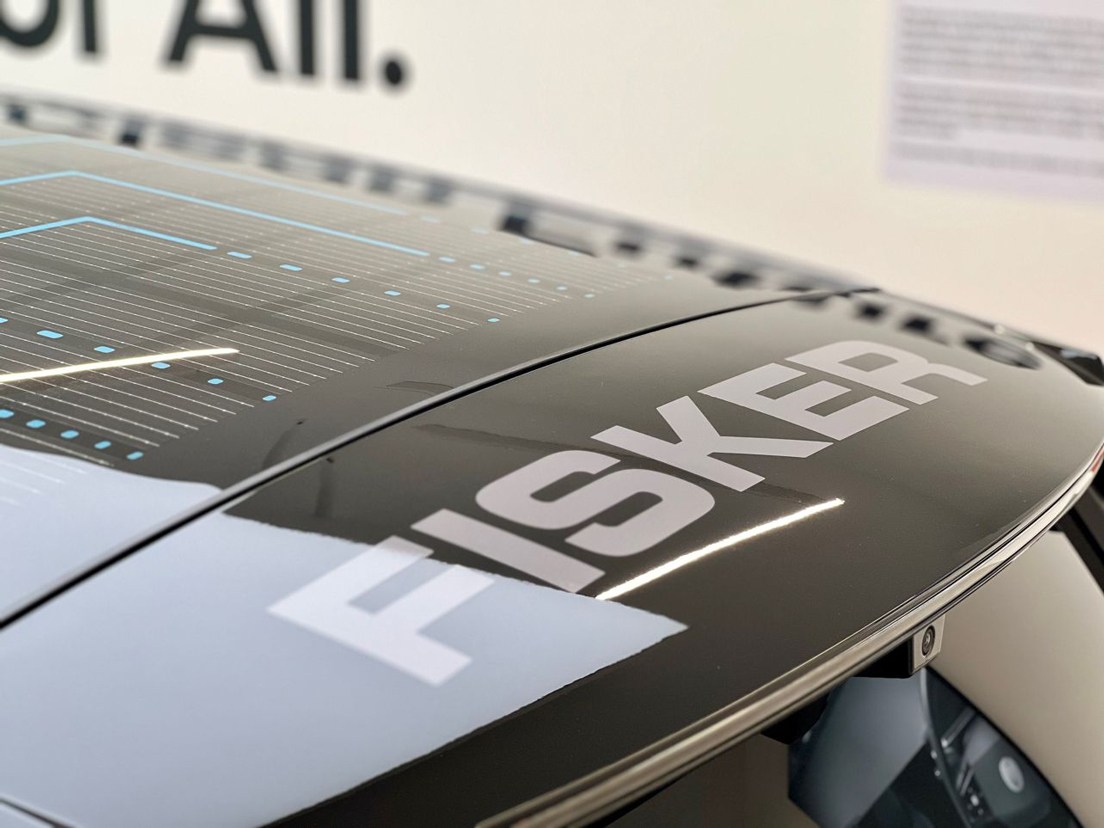
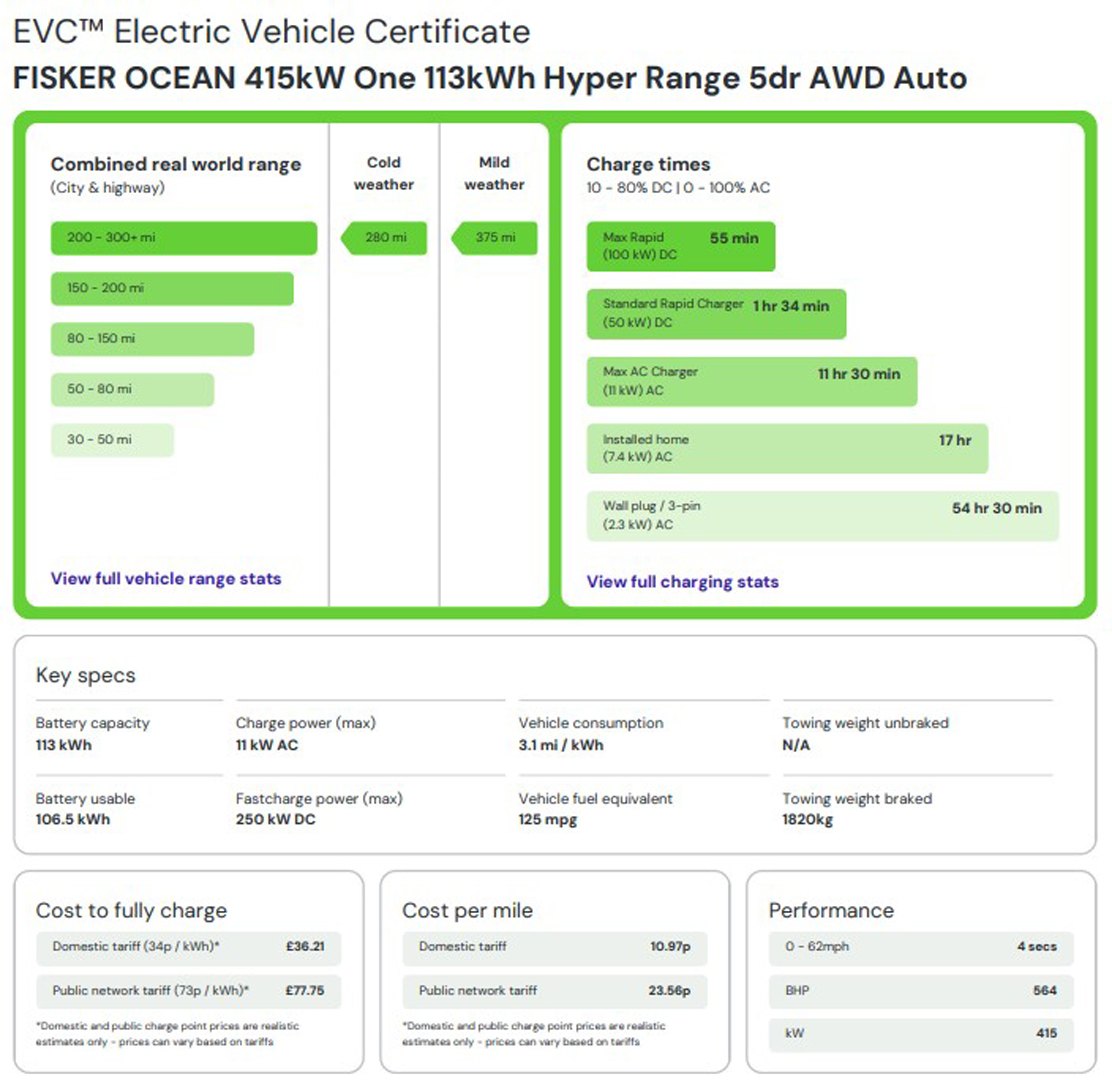
e-car lease work alongside these select finance companies:





e-car lease have a partnership and affiliation with:



Register & get new deals weekly
 Exclusive offers
Exclusive offers
 Electric-only deals
Electric-only deals
 Never miss out
Never miss out

Talk to one of our experts
01942 910 001 Email usLeasing


© Copyright 2025 e-car lease. All rights reserved. e-car lease is a trading name of CarLease (UK) Ltd, e-car lease is a credit broker and not a lender. We are authorised and regulated by the Financial Conduct Authority. Registered No: 706617. BVRLA Membership No. 1471. Registered in England & Wales with Company Number: 09312506 | Data Protection No: ZA088399 | VAT No: 200422089 | Registered Office: Kings Business Centre, Warrington Road, Leigh, Greater Manchester, WN7 3XG
Made by morphsites®












